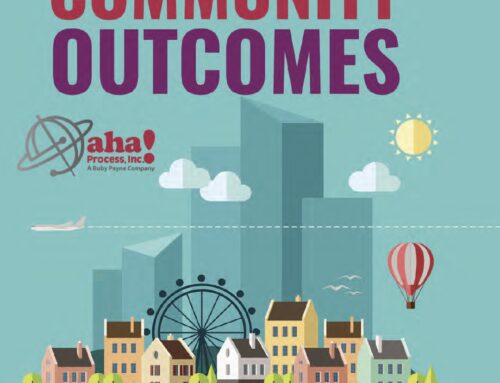 The meaning of life, the universe, and everything, contrary to what is portrayed in The Hitchhiker’s Guide to the Galaxy, is not represented by the number 42. If you were to attend a city council meeting or a committee hearing at the city building or statehouse or Congress, and you just start shouting, “The answer is 42,” you would not make the best impression, but you would illustrate how we use cultural touchstones in communicating complex thoughts; this story points out the danger of only spouting data at elected officials. Yes, 42 is the answer to something, and as a number it does represent data of some sort, but it is still lacking.
The meaning of life, the universe, and everything, contrary to what is portrayed in The Hitchhiker’s Guide to the Galaxy, is not represented by the number 42. If you were to attend a city council meeting or a committee hearing at the city building or statehouse or Congress, and you just start shouting, “The answer is 42,” you would not make the best impression, but you would illustrate how we use cultural touchstones in communicating complex thoughts; this story points out the danger of only spouting data at elected officials. Yes, 42 is the answer to something, and as a number it does represent data of some sort, but it is still lacking.
Policy geeks love data. But humans respond to stories. As Muriel Rukeyser noted: “The universe is made of stories, not of atoms.”
We spent several millennia huddled around campfires in the mouths of caves telling stories. Early cavepeople did not do PowerPoints with charts and graphs showing the migration numbers for wildebeests, although on reflection, perhaps the early cave paintings found in Europe, Africa, and Australia might represent that concept. These cavepeople’s stories were meant to illustrate certain lessons needed for surviving in the harsh ecosystem in which they found themselves living. We still do the same now, but instead of a glowing campfire, we sit in front of a glowing television and gain lessons on interpersonal relationships, how to avoid scary situations, plus we see the bad punished and the good rewarded.
TV is where we work out the issues the society is facing, and we seek solace from the fast change. For example, in the 1960s a top TV show was The Beverly Hillbillies. For those who have never seen the show, it concerned a family from a very backward part of America who were thrust into the modern world by the sudden, incomprehensible wealth brought on by the discovery of oil on their modest farm.
They left the rural life and bought a mansion in Beverly Hills, and then they continued to live a lifestyle not too dissimilar to their previous existence in the eating of “fried possum” and “raccoon stew” as prepared by the matriarch of the family, Granny.
What the show really dealt with was the tension Americans were feeling at the sudden increase in disposable income. Americans had not up to that point in time enjoyed “TV dinners” or “store bought pies” on disposable aluminum pans. Americans were feeling slightly guilty at this prodigious waste of money in exchange for quick, easy, sweet, salty, and fatty food. But we all (or almost all) had a Granny in our heritage, someone who kept chickens and gathered eggs on a farm, or if we were from the larger cities with an ethnic population, perhaps they made their own sauerkraut, or lutefisk, or spaghetti sauce. Everything was reused, nothing was wasted, and lives were lived in quiet frugality. These women kept balls of string in drawers along with balls of rubber bands and aluminum foil. The same aluminum foil that was now being thrown away after consuming a TV dinner, an act that seemed disloyal to their memory.
But in the 1960s that began to change as people took some of their newfound wealth and began to spend it on more frivolous pursuits. And they felt guilty and needed absolution; c’est la vie.
Into this need stepped The Beverly Hillbillies with pithy stories that helped people deal with their newfound wealth, and it both respected and mocked the old ways so everyone could see how the new fit in.
But notice that at no point in time did the show have a script where a professor stepped in front of the camera and began to recite the various data points that illustrated the profound changes facing America. This is partly due to the fact that all across America, people would promptly turn the dial on the TV to watch something else, perhaps, and also because PBS was not invented until 1970.
So here is the situation: People respond to stories. People need stories to put the problem into the right context, but leaders respond to data. The people who are leaders usually rise to that position, in politics, business, or really any position in the community, in part because they can master the facts and see the trends that impact the entity they are in charge of guiding. Plus they can tell a good story.
Look, I just told you a tale about an old, black and white TV show so you could understand the importance of stories. Ironic, isn’t it?
But how do you use stories and data to move elected officials, and the general population when advocating for certain policy changes? Well…that is a much longer dialogue that is found in Bridges Across Every Divide. Sorry, but this is a mere blog post, and not the number 42.
Eugene K. “Gene” Krebs spent eight years in the Ohio House of Representatives, three years on a local school board, and four years as a county commissioner. With Phil DeVol he is coauthor of Bridges Across Every Divide.








